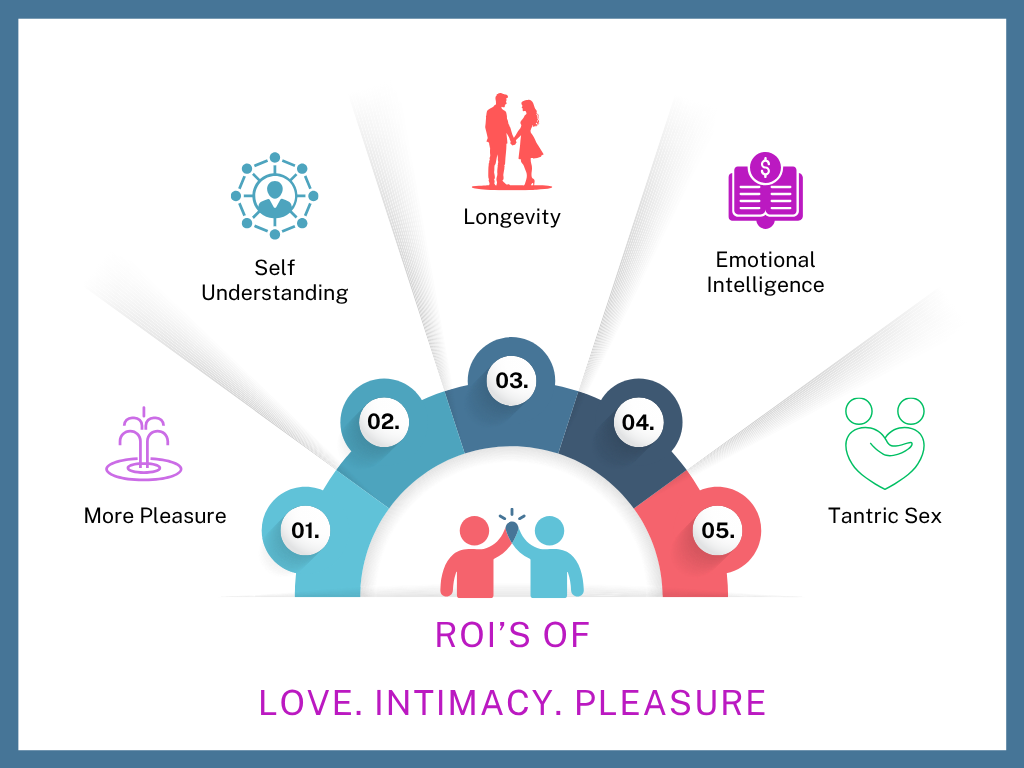Applying Lean Six Sigma (DMAIC Model) to Emotional Intelligence & Intimacy Legacy Mastery

This is a creative and powerful framework. Applying Lean Six Sigma — which is fundamentally about process optimization, eliminating waste, and increasing efficiency through continuous improvement — to the inner work of emotional intelligence and intimacy legacy requires reframing the model for human behavior, not manufacturing.
Objective:
Optimize your relational and emotional processes to consistently create deeper connection, embodied presence, and enduring intimacy as your personal legacy.
1️⃣ Define
What does mastery look like for you?
Clarify your emotional and intimacy goals with precision the same way you'd clarify business objectives.✅ Define your "Why": Why do you want emotional mastery? Why do you want to leave a legacy of intimacy?
✅ Identify key relationships (partner, family, self) as your "customers."
✅ Clarify your personal KPIs:
- Emotional availability
- Conflict recovery time
- Capacity for vulnerability
- Depth of connection
- Consistency in emotional presence
Lean Insight: Lack of clarity = wasted emotional effort. Define success in relational terms.
2️⃣ Measure
Where are you now?
Quantify and track the current state of your emotional intelligence and intimacy practices.✅ Evaluate your baseline:
- How often do you self-regulate successfully?
- How often do you express needs clearly?
- How deeply can you stay present in difficult emotions?
- How often do you create emotional safety for others?
✅ Tools: Assessments (EQ tests, Gottman Love Maps, self-reflection journaling, feedback from your partner)
Lean Insight: If you don’t measure it, you can’t improve it. Emotional patterns are data.
3️⃣ Analyze
What’s in the way?
Identify the "waste" in your current relational habits — what derails connection, emotional safety, and intimacy.✅ Look for recurring breakdowns:
- Emotional reactivity
- Avoidance patterns
- Fear of vulnerability
- Over-intellectualization
- Time scarcity for connection
✅ Identify root causes:
- Unprocessed trauma
- Nervous system dysregulation
- Misaligned priorities
- Cultural or familial conditioning
Lean Insight: Identify emotional bottlenecks like you'd identify inefficiencies in a system.
4️⃣ Improve
What needs to change?
Redesign your emotional and relational systems for efficiency, depth, and consistency.✅ Implement targeted strategies:
- Somatic regulation practices
- Emotional literacy and vocabulary building
- Intentional presence exercises (mindfulness, eye gazing, breathwork)
- Repair rituals for rupture
- High-leverage relational investments (date nights, rituals of connection)
✅ Build new relational habits and feedback loops.
Lean Insight: Small consistent changes outperform occasional grand gestures.
5️⃣ Control
How will you sustain this?
Ensure your new systems for emotional intelligence and intimacy are maintained over time.✅ Ongoing review of your "metrics":
- Is your emotional availability growing?
- Are key relationships flourishing?
- Is your nervous system more regulated under stress?
✅ Maintain practices that reinforce success:
- Therapy or coaching
- Relationship check-ins
- Continued somatic work
- Ritualized connection practices
✅ Protect the system from regression:
- Notice early warning signs of old patterns
- Build accountability with trusted supports
Lean Insight: Emotional mastery isn’t achieved. It’s maintained through conscious, ongoing systems of care.
Your Emotional Intelligence & Intimacy Legacy as a 6 Sigma Outcome
A legacy of intimacy isn’t left by chance — it’s built through optimized, intentional systems. Like Lean Six Sigma in manufacturing, your goal is to eliminate emotional waste (disconnection, avoidance, defensiveness) and optimize for quality outcomes (presence, connection, trust, love) — consistently, efficiently, and with excellence.

You can also change the title listed above and add new articles as well. Edit your Articles from the Pages tab by clicking the edit button. This is a generic article you can use for adding article content / subjects on your website.
You can edit all of this text and replace it with anything you have to say in your news/topic article. You can also change the title listed above and add new articles as well.
Edit your Articles from the Pages tab by clicking the edit button. This is a generic article you can use for adding article content / subjects on your website.
You can edit all of this text and replace it with anything you have to say in your news/topic article. You can also change the title listed above and add new articles as well. Edit your Articles from the Pages tab by clicking the edit button. This is a generic article you can use for adding article content / subjects on your website. You can edit all of this text and replace it with anything you have to say in your news/topic article. You can also change the title listed above and add new articles as well. Edit your Articles from the Pages tab by clicking the edit button. This is a generic article you can use for adding article content / subjects on your website.
You can edit all of this text and replace it with anything you have to say in your news/topic article. You can also change the title listed above and add new articles as well. Edit your Articles from the Pages tab by clicking the edit button.